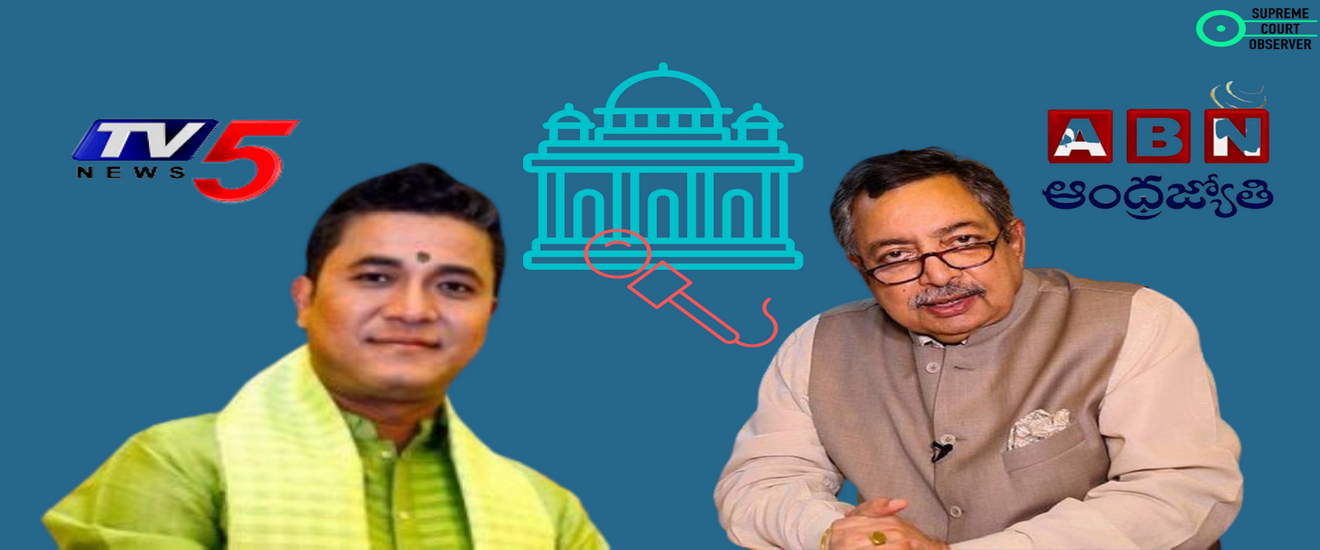Analysis
The Supreme Court on Sedition: Regulate or Remove?
The Supreme Court in Kedarnath Singh (1962) restricted the scope of sedition law. Now the constitutionality of the law has been questioned.

Sedition is a crime under s. 124A of the Indian Penal Code, 1870. It criminalises ‘[exciting] or [attempting] to excite disaffection towards the Government established by law’.
In the past few months, the Supreme Court has dealt with multiple cases on sedition. In February 2021, the Court stayed the arrest of six persons. Including MP Shashi Tharoor and journalists, they had FIRs registered against them for sedition. In May 2021, the Court granted bail to an MP K. Raghu Ramakrishna Raju who had been arrested under the law.
Over the last week, it also issued a judgment, quashing an FIR against journalist Vinod Dua. And an interim order staying ‘coercive action’ against two TV channels. All this, while a constitutional challenge to sedition has been pending, filed by two journalists.
In this post, we trace the Court’s approach on sedition, as reflected in these cases.
Kedarnath Singh Restricted the Scope of Sedition, but was it Enough?
In 1962, the Supreme Court reconsidered the scope of sedition. Article 19(1)(a) of the Constitution of India, 1950, guarantees the right to ‘freedom of speech and expression’. The exceptions to this right include laws to protect ‘the sovereignty and integrity of India’, ‘the security of the State’ and ‘public order’. So, in Kedarnath Singh v. State of Bihar (1962), the Supreme Court held that the crime of sedition was restricted to when there was a tendency of ‘actual violence or incitement to violence’ against the Government.
However, despite this, many have argued that sedition has been systematically misused. It has been used to investigate and arrest persons even when the link to violence was tenuous. A recent study has found 10,900 individuals charged with sedition from 2010 to 2020.
Mixed Messages on Regulation: The Cases of TV5/ABN and Vinod Dua
In 2016, the Supreme Court had considered a petition by Common Cause and SP Udaykumar. They sought a direction requiring a Magistrate and Director General of Police to provide reasoned orders before any investigation or arrest is done for sedition. A bench of J Dipak Misra and J UU Lalit refused, only reiterating the Kedarnath judgment.
On May 31st 2021, the Court issued an interim order in the case filed by two TV channels from Andhra Pradesh: TV5 News and ABN Andhrajyothi. They are seeking to quash FIRs registered against them for sedition. They were charged for sharing the statement made by an MP, critical of the AP government.
In the interim order, a three judge Bench consisting of Justices DY Chandrachud, Nageswara Rao and Ravindra Bhat stayed any coercive action. However, the judges went further. They expressed that sedition would ‘require interpretation in the context of the right of the electronic and print media to communicate news, information and the rights, even those (sic) that may be critical of the prevailing regime in any part of the nation’. Notice was issued.
Three days later, on June 3rd, the Court delivered its verdict quashing the FIR registered against Vinod Dua for sedition. The charge was based on a YouTube video in which Dua criticised the Government’s handling of the migrant crisis. The bench of Justices U.U. Lalit and Vineet Saran, reiterated the Kedarnath Singh judgment. They held that journalists and media were entitled to the protection of that judgment.
Dua had a second plea. Every FIR registered against a journalist of at least 10 years standing, should be cleared by a special Committee. This had been done for doctors in medical negligence cases, he argued. However, the Court refused. It held that the earlier decisions for protection had some basis in the IPC itself. This was not present for the protection of journalists. If the Court constituted a committee it would ‘amount to encroachment’ on the legislature.
Challenging the Constitutionality: Kishorechandra Wangkhem & Kanhaiya Lal Shukla
Two journalists, charged with sedition, have challenged the constitutionality of the law itself. Kishorechandra Wangkhemcha was charged for a Facebook posts criticising the government of Manipur. Kanhaiya Lal Shukla was arrested for a cartoon depicting fake police encounters.
They have argued that social and material circumstances have changed since 1962. While the Kedarnath judgment had only restricted the scope of sedition, today criminalising the act itself would be unconstitutional. On April 30th, a bench of Justices U.U. Lalit, Indira Banerjee and K.M. Joseph, admitted the matter. Notice was issued to the Centre.
It is uncertain to what extent Chandrachud J’s bench will consider issuing directions to re-interpret sedition. Or whether it will remain an obiter.
However, the reasons to deny the regulation of sedition cases do not neatly align with the reasons to consider sedition constitutional. For regulation, the Court is faced with an issue of separation of powers. It would be framing law. In determining constitutionality, it tests law that already exists. This function sits more within the traditional realm of the judiciary.